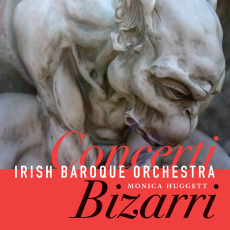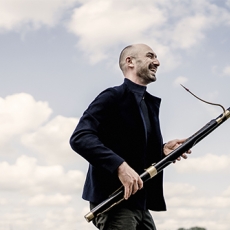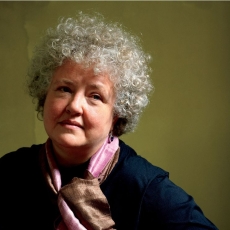IBO - Concerti Bizarri - MusicWeb International
Music written before the mid-18th century is basically ensemble music. With that I mean that there was no formal division between a soloist and an ensemble of players or singers which we now call an orchestra or a choir respectively. This explains why until the early 18th century most solo parts in instrumental music were for a string instrument as instrumental ensembles normally didn't include wind instruments. That gradually changed in the early decades of the 18th century. In Germany orchestral overtures - modelled after the suites from Lully operas played in France - were mostly scored for two oboes, strings and basso continuo (bc), sometimes with an additional bassoon. At the same time composers started to write solo parts for such instruments, and also for transverse flute.
The present disc is largely devoted to concertos which include solo parts for two or three instruments. All but one are from the pens of German composers. The exception is Antonio Vivaldi but his inclusion is well justified as he laid the foundation of what was to become the basic form of solo concertos across Europe: three movements (fast, slow, fast), a solo part and ritornellos for strings. Vivaldi composed 27 concertos for the cello and in addition some for a cello and another instrument. The Concerto in g minor (RV 531) is the only one for two cellos. The opening movement is notable: the cellos start the proceedings, accompanied only by the basso continuo. The slow movement even entirely omits any intervention of the tutti.
Georg Philipp Telemann was one of the few composers who largely ignored the Vivaldian concerto form. He preferred the Corellian trio sonata as the model for his concertos, as is the case with the Concerto in D (TWV 53,D4). The combination of a string instrument and a wind instrument is characteristic of his oeuvre which includes pieces for flute and viola da gamba or for violin and bassoon. Here the latter plays alongside two violins which it sometimes even tries to imitate, for instance in staccato notes suggesting the pizzicato technique of string instruments.
The most modern composer in the programme is Johann Friedrich Fasch who is a link between the baroque style and that of the classical period. For most of his life he worked in Zerbst but his compositions found a wide dissemination across Germany. In particular the court chapel in Dresden often played his music; he even composed some pieces specifically for the chapel, directed by the famous violinist Johann Georg Pisendel. The modernity of the Concerto in b minor comes to the fore in the tutti episodes which are strictly homophonic. The two solo instruments are also involved in the ritornelli. In the slow movement the oboe keeps silent; its role is taken over by the first violin. Quite unusual is the Concerto in G which belongs to the genre of the concerto da camera. There are no ritornelli for the strings; these are played by the solo instruments which mostly act in pairs in the first two movements. The piece takes the form of the Vivaldian solo concerto but the third movement is followed by a pair of menuets. The scoring is notable for including two instruments which Fasch called hautbois du silve. It is not known for sure which instruments are meant; they are mostly played byoboi da caccia and that is the case here as well. The two bassoon parts were originally intended for chalcedons, referring to a type of bass lute. Later this indication was scratched out and replaced by bassono.
Several composers in the programme had been a pupil of the Thomasschule in Leipzig. Fasch was one of them, Heinichen another. He became known as a theorist but also played a major role in musical life in Dresden where he acted as Kapellmeister from 1717 until his death. He was under strong Italian influence: for a number of years he lived in Italy and in Venice he composed some operas. Part of his oeuvre are also a number of Italian cantatas. The Concerto in g minor for oboe and strings follows the Vivaldian model. It is a virtuosic piece; the slow movement includes an expressive solo part in which the strings play pizzicato. Heinichen regularly uses the dynamic indication pianissimo which - according to Andreas Helm in the booklet - was quite unusual at the time. The closing movement includes a chromatic descending figure.
The most individualistic composer as far as his style of writing is concerned is Christoph Graupner who for most of his life was Kapellmeister at the court in Darmstadt. In baroque music one often recognizes certain patterns which return in compositions on a regular basis but that is not the case with Graupner's music. Many compositions seem like a sequence of ideas which the composer has written down as they came to him. He often also gave solo parts to uncommon instruments. To a certain extent that is also the case with the Concerto in C for bassoon. It was not an uncommon instrument but was seldom used in a solo role in Germany. Bach, Fasch and even Telemann didn't compose a single concerto for bassoon but Graupner's oeuvre contains four concertos which were inspired by the presence of the bassoon virtuoso Johann Christian Klotsch, who became a member of the court orchestra in 1735. The concertos give a very good impression of his skills, as the solo parts are virtuosic and explore the features of the instrument to the full. That also goes for the concerto recorded here.
The word 'uncommon' certainly fits the piece which ends the programme. The Concerto in G is a triple concerto - which in itself is not that rare - but for three instruments which were not often used for solo pieces. The most unusual is the flauto d'amore; even Quantz gave it hardly any attention in his book on flute playing. In the booklet Lisa Beznosiuk writes that it took her quite some time to find the appropriate instrument. At the end of the day she decided to use her "usual ebony traverso". The oboe d'amore was more frequently used, for instance by Bach and Telemann, but the viola d'amore was a rather uncommon instrument. The combination of these three makes this concerto quite unique. This concerto certainly deserves to be ranked among the category of "Concerti Bizarri".
The performances are as good as one would wish. Under the engaging direction of Monica Huggett the members of the Irish Baroque Orchestra show what they are made of. The solo parts are - in accordance with common practice at the time - performed by people from its ranks. Monica Huggett states that the members of the orchestra are fully equipped to take care of the solo parts and this recording proves her right. I don't want to single out any player: all of them deliver wonderful performances. I should probably mention Peter Whelan because his solo part in Graupner's concerto is very virtuosic and he delivers an impressive performance.
The booklet includes informative liner-notes. It is especially interesting that members of the orchestra comment on the pieces in which they play the solo parts.
The main thing is that this disc brings together some unconventional but very compelling instrumental works by composers who have remained in the shadow of the great Bach for too long. That even goes for Telemann. Everyone of them deserves the attention of modern-day performers and this disc should help give them their rightful place in musical life of our time.



